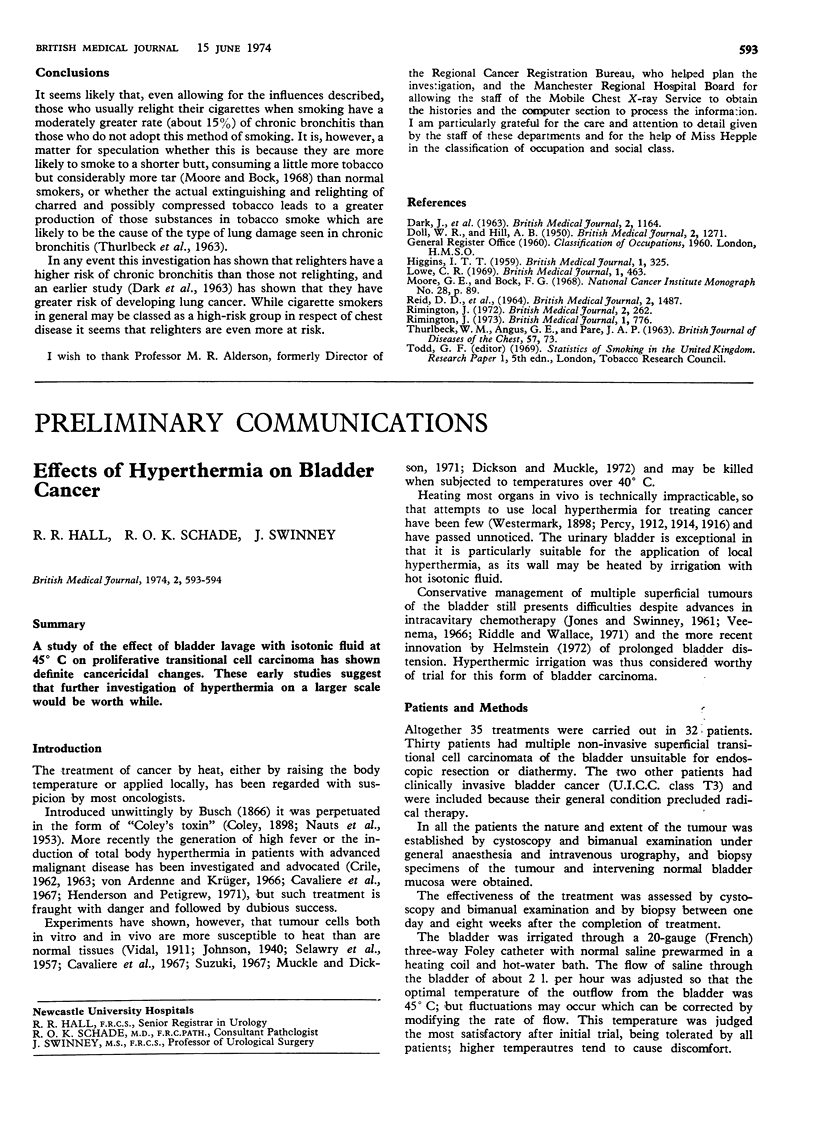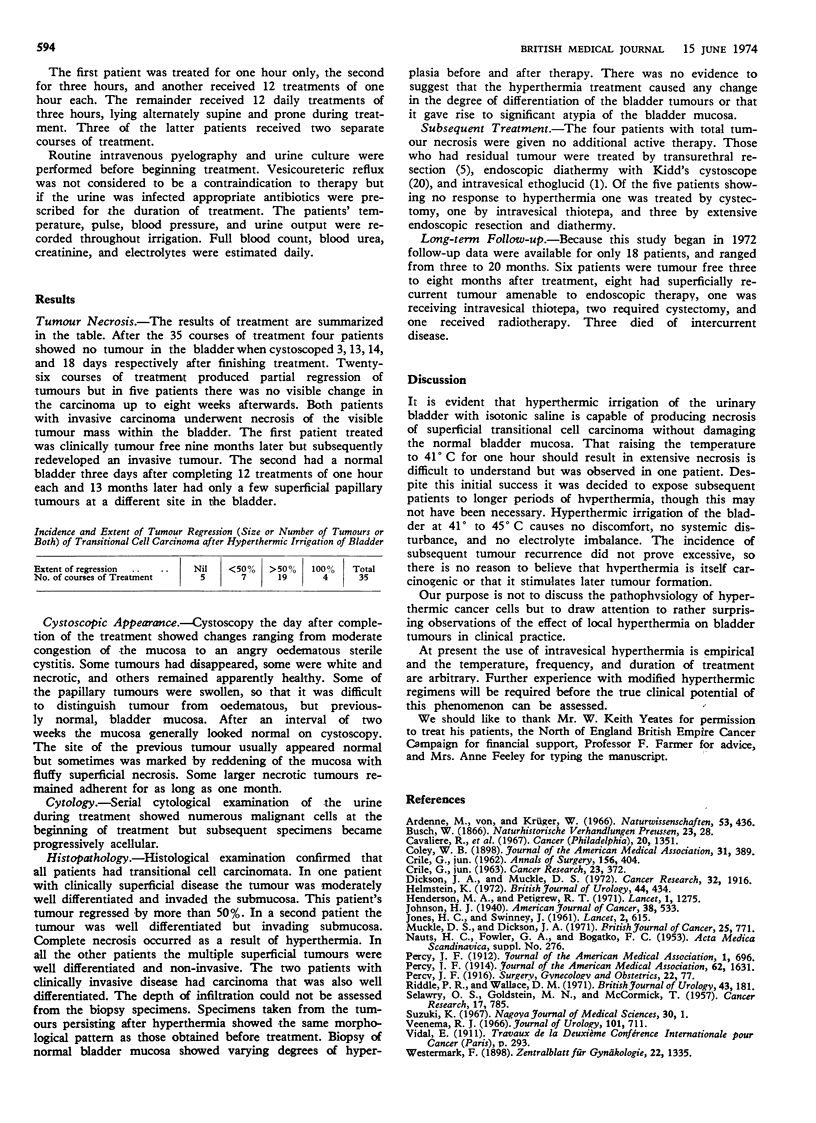Abstract
A study of the effect of bladder lavage with isotonic fluid at 45° C on proliferative transitional cell carcinoma has shown definite cancericidal changes. These early studies suggest that further investigation of hyperthermia on a larger scale would be worth while.
Full text
PDF

Selected References
These references are in PubMed. This may not be the complete list of references from this article.
- CRILE G., Jr Selective destruction of cancers after exposure to heat. Ann Surg. 1962 Sep;156:404–407. doi: 10.1097/00000658-196209000-00007. [DOI] [PMC free article] [PubMed] [Google Scholar]
- CRILE G., Jr The effects of heat and radiation on cancers implanted on the feet of mice. Cancer Res. 1963 Mar;23:372–380. [PubMed] [Google Scholar]
- Cavaliere R., Ciocatto E. C., Giovanella B. C., Heidelberger C., Johnson R. O., Margottini M., Mondovi B., Moricca G., Rossi-Fanelli A. Selective heat sensitivity of cancer cells. Biochemical and clinical studies. Cancer. 1967 Sep;20(9):1351–1381. doi: 10.1002/1097-0142(196709)20:9<1351::aid-cncr2820200902>3.0.co;2-#. [DOI] [PubMed] [Google Scholar]
- Dickson J. A., Muckle D. S. Total-body hyperthermia versus primary tumor hyperthermia in the treatment of the rabbit VX-2 carcinoma. Cancer Res. 1972 Sep;32(9):1916–1923. [PubMed] [Google Scholar]
- Helmstein K. Treatment of bladder carcinoma by a hydrostatic pressure technique. Report on 43 cases. Br J Urol. 1972 Aug;44(4):434–450. doi: 10.1111/j.1464-410x.1972.tb10103.x. [DOI] [PubMed] [Google Scholar]
- Henderson M. A., Pettigrew R. T. Induction of controlled hyperthermia in treatment of cancer. Lancet. 1971 Jun 19;1(7712):1275–1277. doi: 10.1016/s0140-6736(71)91785-5. [DOI] [PubMed] [Google Scholar]
- JONES H. C., SWINNEY J. Thiotepa in the treatment of tumours of the bladder. Lancet. 1961 Sep 16;2(7203):615–618. doi: 10.1016/s0140-6736(61)90304-x. [DOI] [PubMed] [Google Scholar]
- Muckle D. S., Dickson J. A. The selective inhibitory effect of hyperthermia on the metabolism and growth of malignant cells. Br J Cancer. 1971 Dec;25(4):771–778. doi: 10.1038/bjc.1971.91. [DOI] [PMC free article] [PubMed] [Google Scholar]
- Riddle P. R., Wallace D. M. Intracavitary chemotherapy for multiple non-invasive bladder tumours. Br J Urol. 1971 Apr;43(2):181–184. doi: 10.1111/j.1464-410x.1971.tb12023.x. [DOI] [PubMed] [Google Scholar]
- SELAWRY O. S., GOLDSTEIN M. N., McCORMICK T. Hyperthermia in tissue-cultured cells of malignant origin. Cancer Res. 1957 Sep;17(8):785–791. [PubMed] [Google Scholar]
- Veenema R. J., Dean A. L., Jr, Uson A. C., Roberts M., Longo F. Thiotepa bladder instillations: therapy and prophylaxis for superficial bladder tumors. J Urol. 1969 May;101(5):711–715. doi: 10.1016/s0022-5347(17)62408-x. [DOI] [PubMed] [Google Scholar]
- von Ardenne M., Krüger W. Auffindung eines Bereiches nahezu unendlicher Selektivität zwischen Krebszellen und gesunden Zellen bei der Krebstherapie mit Extremhyperthermie. Naturwissenschaften. 1966 Sep;53(17):436–437. doi: 10.1007/BF00654521. [DOI] [PubMed] [Google Scholar]


